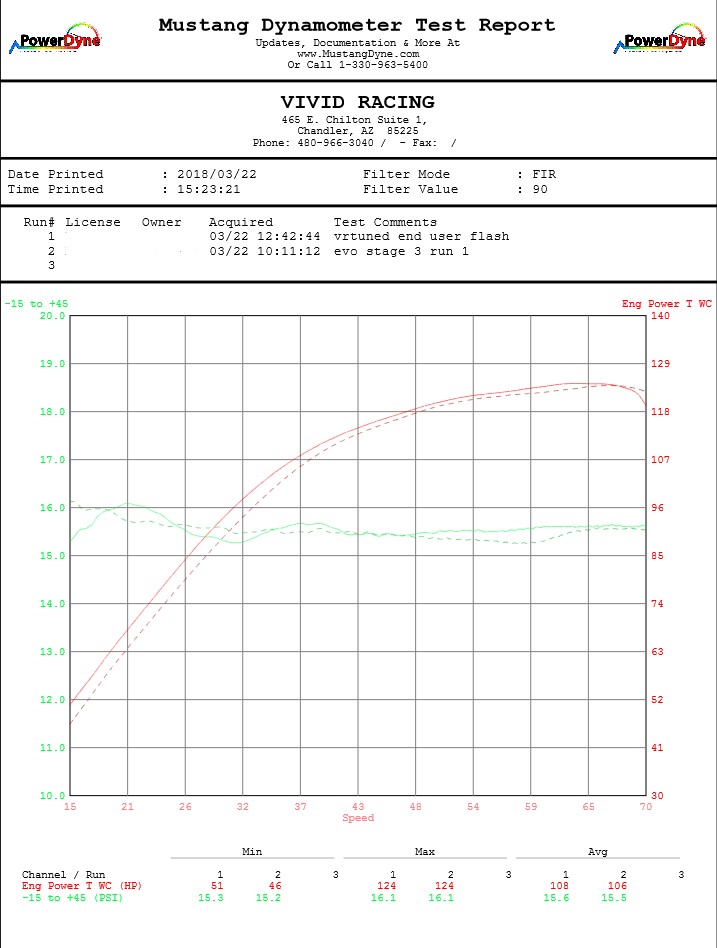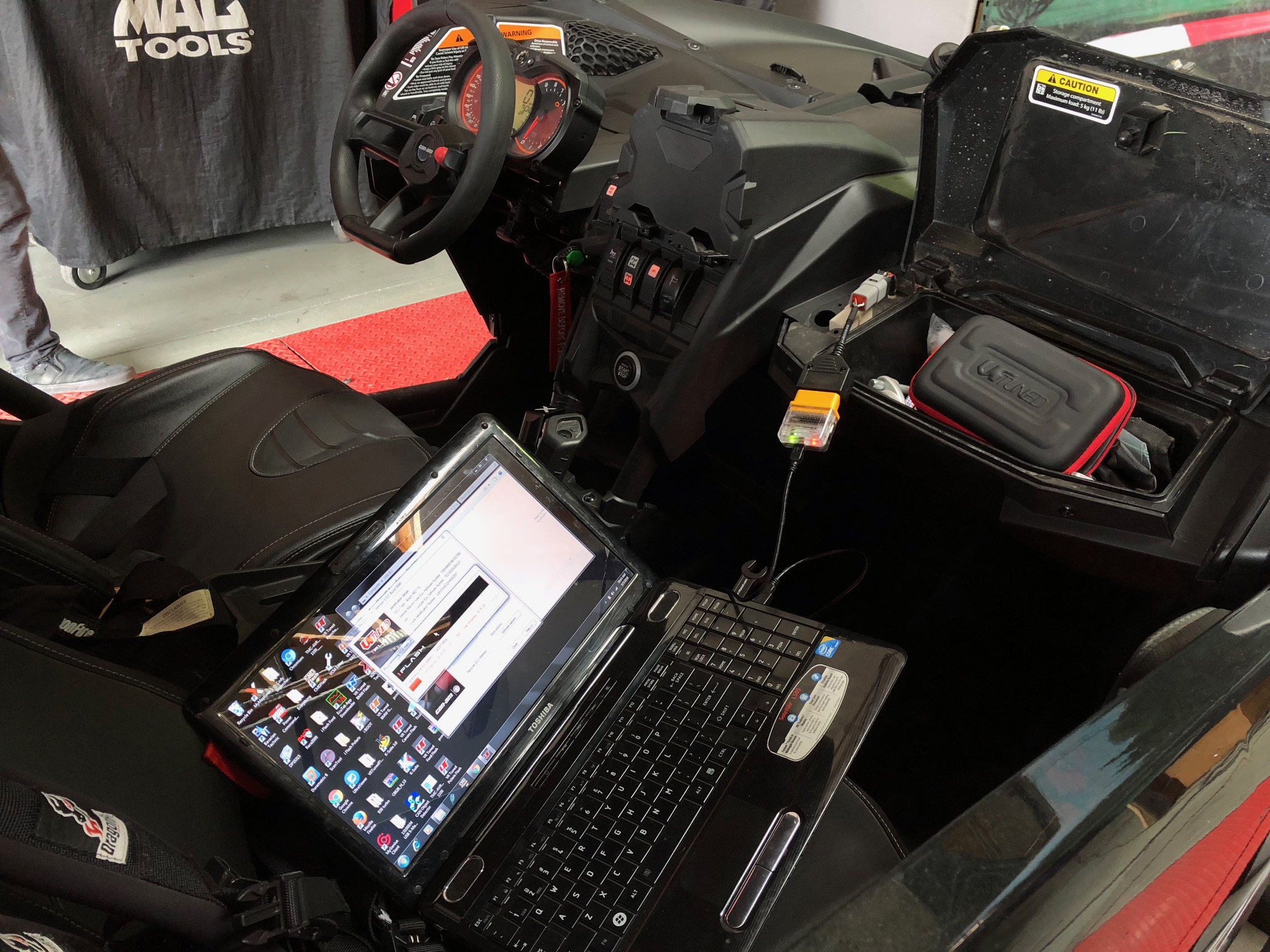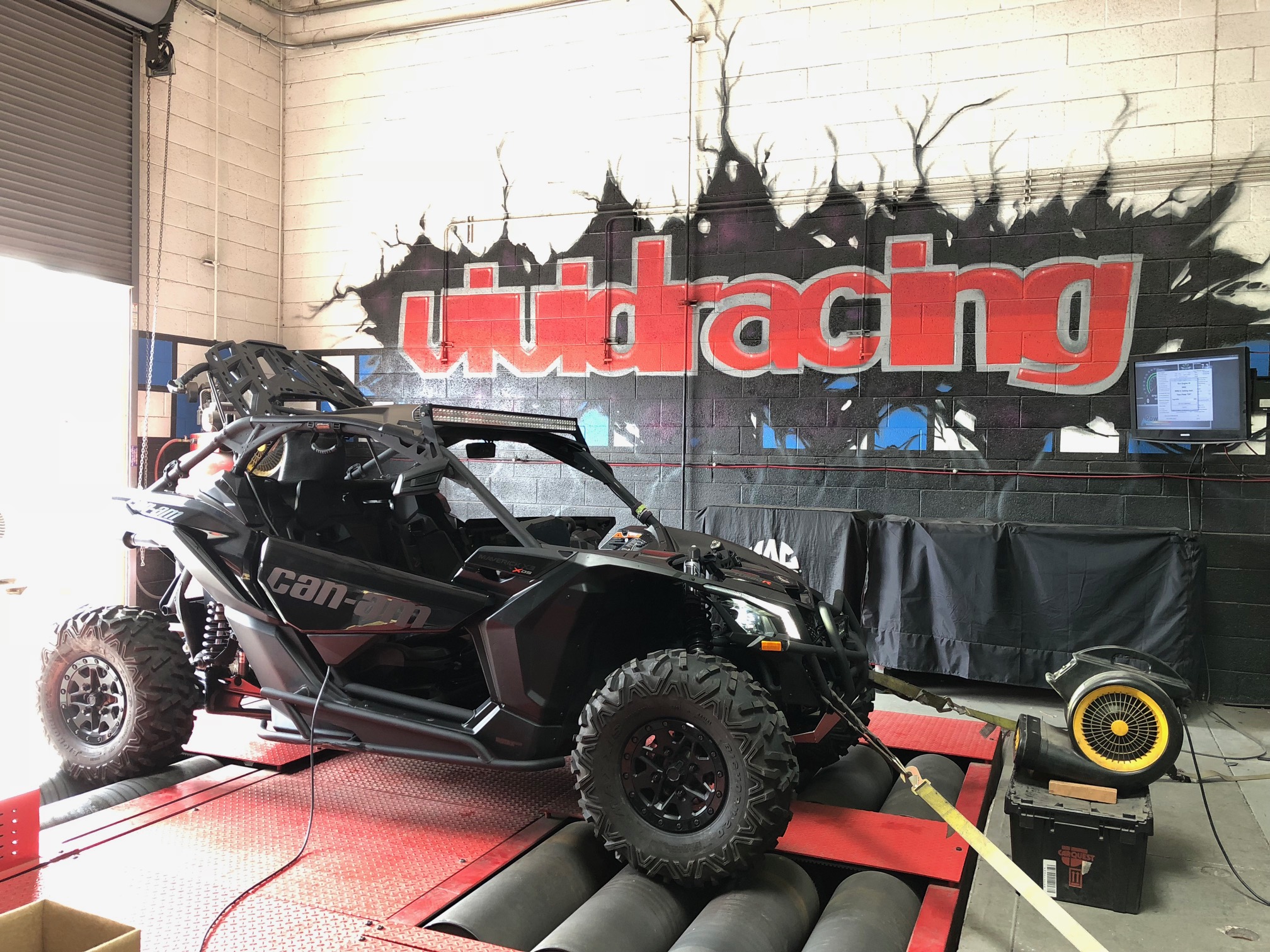There is always a debate on who has the best ECU flash for the 2018 Can-Am Maverick X3 RS. There are many ways to test and compare the different tunes. While some will try to cheat with fake drag races like an episode of Pinks, we test and compare ECU tunes in a controlled environment. This is the only way to test. Same car, same gas, same mods with the only variable being the tune. But why do testing like this some may ask? Why is there Coke vs Pepsi, Ford vs Chevy, and Taco Bell vs Del Taco? Competition creates business and better products. There is never one solution and just because someone may be first, does not mean they are best.
Starting in October 2016, Vivid Racing’s VR Tuned has been doing UTV ECU Tuning. Besides real world testing and dyno sheets, we like to compare ourselves to other tunes to see where we place. Names like Bikeman, Alba, RVS, PWR are all known in the Can-Am X3 tuning game. However, one name that everyone brings up is EVO Powersports. So we decided to get a 2018 Can-Am Maverick X3 DS with this tune and test it against our VR Tuned ECU Flash. The car in question had a Gibson dual tip muffler exhaust, EVO intake, and KWI floating clutch setup. The tests we ran were on our Mustang AWD Dyno here at our GIlbert, AZ facility running 91 octane. Based on the Dyno Sheet times, there was about 2 hours in between runs. Enough time to allow each car to run cool. Our tests were done by MPH starting at 15mph and ending at 70mph. 70mph on the dyno computer is about 80mph on the car.
Looking at the dyno sheet, the solid line is the VR Tuned ECU Flash were the dotted line is the EVO Powersports Stage 3. VR Tuned does not do stages as we give you the best file the first time. A “stage” should not cost you extra money as you are gaining power from the bolt-ons you have done. The only time you should need a new tune is if you go with different injectors, fuel pump, or turbocharger. Both cars had a max peak power of 124 rear wheel horsepower while the VR Tuned flash made about 2-3 more horsepower from the bottom to the middle of the power curve. This is due to timing, fuel, and limiter differences. You can see the green line compares boost pressure. Both vehicles had an average of around 15.6psi with a spike to 16.1. The AFR which is not plotted showed both cars in the 11.3-11.6 range. This is a tad rich but safe for any type of weather use. The car could be leaned out to around 12-12.5 and see boost pressures of around 17psi for a larger increase.
So how do you make a good purchasing decision for your Can-Am X3 tuning? Customer service and reliability is extremely important. Vivid Racing has 40 people available to assist with all types of questions and support. We are available via Live Chat, Email, and Phone Monday to Friday. We even get customers back files outside of normal business hours and weekends. We have been in business Since 2001 with one company that has continually grown. Our VR Tuned support and product is designed to ensure your experience is smooth and easy. We are always on top of giving customers the best file the first time. Our ECU Flash system is all done via the diagnostic port and a PC Windows tablet or laptop. You don’t need to be connected to the internet, buy credits, or wait for an activation. Our solution is extremely easy to use and allows you to flash between your tuned and stock files. This is a great feature for those concerned with warranty. More importantly, VR Tuned has never recalled any of it’s ECU tuning or had any catastrophic engine failures. We focus on power with reliability!
View all our VR Tuned Can-Am ECU Tuning Here
See how our ECU Flashing System Works Here
Please Enjoy Our Other Comparison Articles:
- 2017 Can-Am ECU Tuning EVO vs VR Tuned Chapter 1
- 2017 Can-Am ECU Tuning EVO vs VR Tuned Chapter 2
- 2018 Can-Am ECU Tuning Testing
- 2016 Polaris RZR Turbo ECU Tuning EVO Stage 2 vs VR Tuned
- 2016 Polaris RZR Turbo ECU Tuning EVO vs VR Tuned
- 2016 Polaris RZR Turbo Big Injector ECU Tuning EVO vs VR Tuned
- 2017 Polaris RZR Turbo ECU Tuning EVO vs VR Tuned







